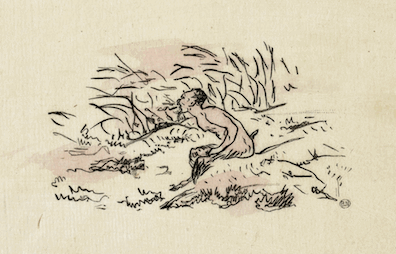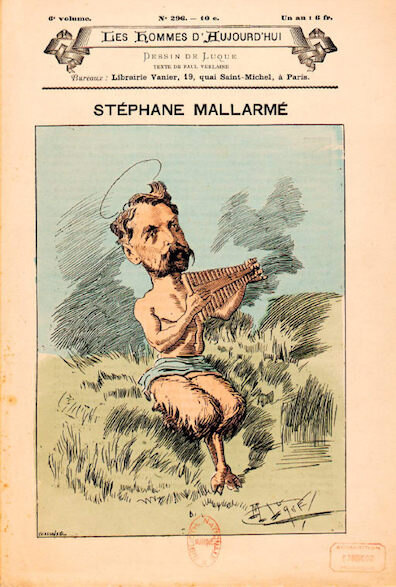Pan's hour
Pan's hour
In Brief
As Stephen lies back on the rocks to nap, he thinks, "I am caught in this burning scene. Pan's hour, the faunal noon." The Romans associated the Greek god Pan with their own rural demigods called "fauns," who were libidinous denizens of the countryside, half-human and half-goat in shape. Stephen may be thinking of one particular faun, the figure in Stéphane Mallarmé's celebrated poem L'après-midi d'un faune, "The after-noon of a faun" (1876).
Read More
An "églogue" or pastoral revery, L'après-midi d'un faune is spoken by a faun who wakes up from an afternoon nap and thinks desirously about two nymphs he has encountered (in a dream? in actuality?) He wants to make the thought of them endure: "je les veux perpétuer." The end of the poem finds him lying under the sun on the hot sand, unable to do justice to the vision.
William York Tindall was the first to suggest that Stephen is recalling this poem, in A Reader's Guide to James Joyce (1959). Gifford finds the connection convincing, noting that Mallarmé's poem emphasizes heat just as Stephen does, and that its description of "l'heure fauve" (the tawny hour), thick with heat and heavy with foliage, is picked up in Stephen's next sentence: "Among gumheavy serpentplants, milkoozing fruits, where on the tawny waters leaves lie wide." He observes, though, that if Stephen is thinking of the poem he changes its bitter-sweet condition to a more idyllic one: "Pain is far."
Stephen's images of heavy foliage and languid ease anticipate Bloom's thoughts in the third paragraph of Lotus Eaters, and his impulse to nap on the seashore corresponds to Bloom's nodding off at the end of Nausicaa.

